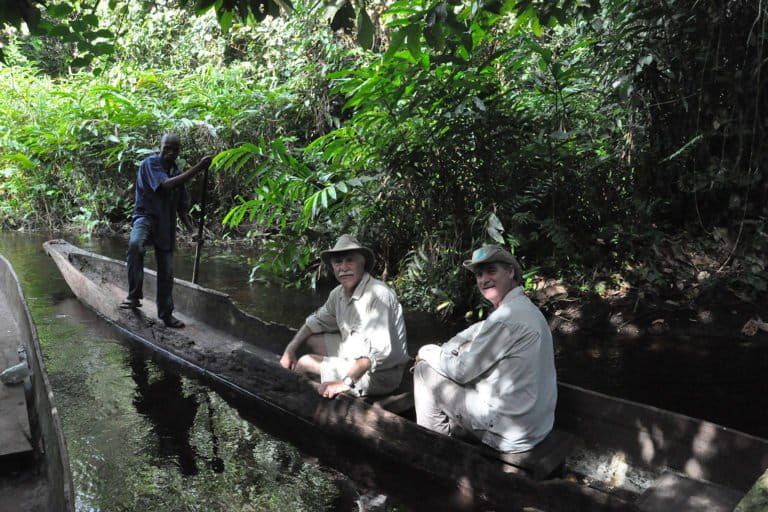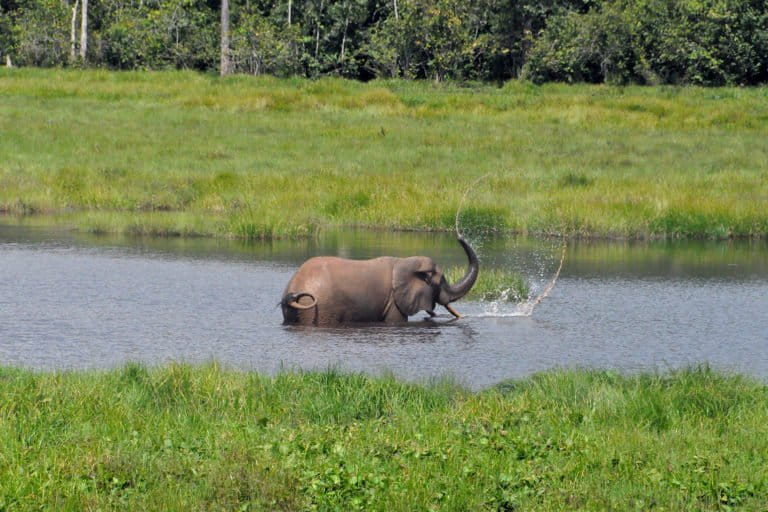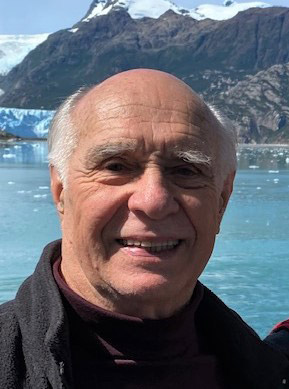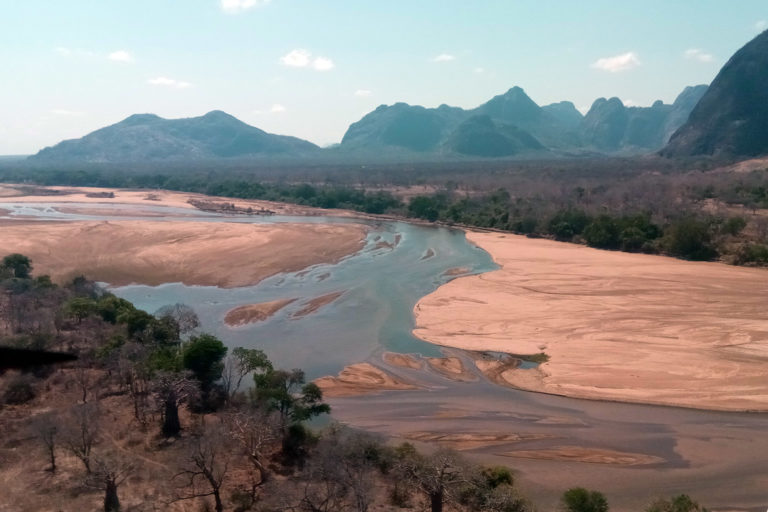- Rodger Schlickeisen made a name for himself in conservation circles from the early 1990s thanks to his leadership at Defenders of Wildlife, which grew rapidly in membership and influence during his 20 years at the helm. The group became known as a staunch advocate for wildlife via its defense of the U.S. Endangered Species Act and conservation policies.
- Schlickeisen left Defenders in 2011 to embark on a second career in conservation as head of the Wildcat Foundation, the philanthropy funded by U.S. investor and businessman David Bonderman. The Wildcat Foundation supports efforts to protect wildlife in Africa, including place-based conservation projects and initiatives that aim to combat the wildlife trade.
- Having worked in conservation in both the U.S. and Africa, Schlickeisen sees similarities and sharp contrasts between the two geographies. Some of the key differences between the U.S. and Africa, he says, are the legal and institutional infrastructure that enable effective conservation.
- Schlickeisen discussed these issues and more in a February 2021 interview with Mongabay founder and CEO Rhett A. Butler.
Rodger Schlickeisen made a name for himself in conservation circles from the early 1990s thanks to his leadership at Defenders of Wildlife, which grew rapidly in membership and influence during his 20 years at the helm. The group became known as a staunch advocate for wildlife via its defense of the U.S. Endangered Species Act and conservation policies.
Schlickeisen left Defenders in 2011 to embark on a second career in conservation as head of the Wildcat Foundation, the philanthropy funded by U.S. investor and businessman David Bonderman. The Wildcat Foundation supports efforts to protect wildlife in Africa, including place-based conservation projects and initiatives that aim to combat the wildlife trade.
Having worked in conservation in both the U.S. and Africa, Schlickeisen sees similarities and sharp contrasts between the two geographies.
“Biodiversity is under threat from human activity and not sufficiently appreciated in either the U.S. or Africa,” he told Mongabay. “One thing I’ve found of personal interest, given my earlier work, is the similarity of the plight of the top predators in the U.S. and in Africa. The top predator in the U.S. among land mammals is the wolf, and the key threat to its existence has come from livestock owners who almost universally exaggerate its predation on cattle and sheep. In Africa, the top predator, the lion, faces a similar threat from livestock owners, primarily tribal members who own cattle that lions can target.”

Some of the key differences between the U.S. and Africa, he says, are the legal and institutional infrastructure that enable effective conservation.
“Compared to Africa, a major advantage the U.S. has in dealing with its threats to wildlife, protected areas and biodiversity is that the legal and institutional infrastructure important to promoting and sustaining proper care of all three is well-established, well-staffed, and reasonably well-resourced,” he said. “By infrastructure, I refer, for example, to the federal and state land and wildlife agencies, the wide range of nonprofit conservation and advocacy organizations, a fairly complete set of laws to protect the natural world, and a trustworthy court system where those laws can be enforced. In comparison, that same infrastructure in Africa is in a much earlier state of development and therefore not nearly as supportive.”

Schlickeisen says funders who are new to Africa tend to underestimate the differences. As a result, there is sometimes an overemphasis on technological solutions that may not be appropriate for the local context, lack of investment in building leadership capacity, or assumptions that legal frameworks supportive of conservation are in place.
“Funders should also be careful to not overestimate what new technology can accomplish in Africa, because the conditions in which that technology must be applied are almost always significantly different from those that were assumed during development,” he said.
“In the case of our grants for wildlife anti-trafficking, we favor carefully selected NGOs native to the subject country, because in our experience they’re the most likely to know the country, the problem, and who’s effective and trustworthy in relevant enforcement agencies.”
Schlickeisen discussed these issues and more in a February 2021 interview with Mongabay founder and CEO Rhett A. Butler.
AN INTERVIEW WITH RODGER SCHLICKEISEN
What inspired your interest in wildlife and conservation?
 I suppose that spending many of my formative years growing up in rural Oregon, and especially in the Cascade Mountains, had some influence. But mostly it came later when I learned that the world’s iconic species are at serious risk — part of what is essentially a sixth mass extinction that threatens a catastrophic loss of biodiversity. I felt challenged to contribute to doing something about it.
I suppose that spending many of my formative years growing up in rural Oregon, and especially in the Cascade Mountains, had some influence. But mostly it came later when I learned that the world’s iconic species are at serious risk — part of what is essentially a sixth mass extinction that threatens a catastrophic loss of biodiversity. I felt challenged to contribute to doing something about it.
You spent 20 years at Defenders of Wildlife, during which time the organization experienced rapid growth in membership and influence. What drove that growth and what achievement are you most proud of from that time?
When I was recruited to lead Defenders, it was a small nonprofit torn between being an advocate for saving individual endangered species, and preserving biodiversity. The two are flip sides of the same coin, and the board supported my pursuing both, with the major public face being the work on endangered species. We highlighted the most charismatic Defenders issue I could identify – promoting recovery of the continent’s keystone predator, the wolf, using the Endangered Species Act to require its reintroduction to the northern Rockies. We even changed our logo to feature the wolf. We built a mass membership of donors by highlighting the wolf cause, something that gave us the resources to become a sustainable and effective advocate, including especially through a strong litigation department, for all endangered species and all U.S. laws important to biodiversity conservation. I take some satisfaction too from our successful battle to stop a determined majority, anti-ESA Congress from destroying that Act in 2005-2006.
In an interview he did with Mongabay in October, Bruce Babbitt called returning wolves to Yellowstone the conservation highlight of his career. Where does that moment rank for you among efforts to restore native wildlife and ecosystems in the United States?
I was with Bruce in Yellowstone when the wolves were brought in, and I’d say that given the country’s history of almost causing the wolf’s full extirpation from the U.S., and the historic animosity felt toward predators in livestock country, that reintroduction has to be the most visible commitment this country has made to saving endangered species and biodiversity. It’s a highlight, no question. But I admit I feel the most personal satisfaction from defeating House Resources Committee chairman Richard Pombo’s re-election, after he led the effort to destroy the ESA. Everyone else considered it a mission impossible, and until the end, we were alone in making it happen.
Since leaving Defenders in late 2011, you’ve transitioned into a very different role: leading a philanthropic effort to protect wildlife and parks in Africa. In general terms, how do the threats in Africa and the U.S. compare?
Biodiversity is under threat from human activity and not sufficiently appreciated in either the U.S. or Africa. In the U.S., I’d say it’s mostly now from inadequate regulation of land development and economic activities of one kind or another. While in Africa, the threat comes most fundamentally from an extremely high rate of population growth which, depending upon the country, can be 2.5 to 5 times the rate in developed countries. That enormous growth is causing rapid loss of habitat and vital connecting wildlife corridors, and increases in poaching for consumption and the black market. As to the biggest threats to iconic species, that depends upon the species, but in general it’s poaching for bushmeat and body parts for the black market (especially rhino horn, elephant ivory and pangolin scales for the Asian market).
One thing I’ve found of personal interest, given my earlier work, is the similarity of the plight of the top predators in the US and in Africa. The top predator in the U.S. among land mammals is the wolf, and the key threat to its existence has come from livestock owners who almost universally exaggerate its predation on cattle and sheep. In Africa, the top predator, the lion, faces a similar threat from livestock owners, primarily tribal members who own cattle that lions can target. Some years ago I enjoyed taking two visiting lion conservationists to meet with the head of the Yellowstone wolf recovery program – and then sitting and listening to them discuss the similarities of the threats they had to deal with.

Compared to Africa, a major advantage the U.S. has in dealing with its threats to wildlife, protected areas and biodiversity is that the legal and institutional infrastructure important to promoting and sustaining proper care of all three is well established, well-staffed, and reasonably well resourced — and is therefore quite supportive of conservation. By infrastructure, I refer, for example, to the federal and state land and wildlife agencies, the wide range of nonprofit conservation and advocacy organizations, a fairly complete set of laws to protect the natural world, and a trustworthy court system where those laws can be enforced. In comparison, that same infrastructure in Africa is in a much earlier state of development and therefore not nearly as supportive. And that means much more must be done with assistance from the outside.
What kind of organizations and interventions does the foundation prioritize?
Because we believe that the most fundamental requirement for successful wildlife conservation is that the rule of law as it applies to designated protected areas and wildlife be enforced, that’s what our grants promote. If a national park isn’t secure, then poaching and other illegal human exploitation will result in catastrophic loss of habitat and wildlife. Tourists won’t visit because there’s less to enjoy, and because they don’t feel safe. There won’t be the jobs and other income-generating activities for locals generated by tourism fees and their other spending. Etcetera. There may still be international agency and foundation grants that fund physical and social infrastructure development, but the resulting improvements won’t last if there is inadequate security.
So we support the development of projects that combat poaching in Africa’s designated protected areas, and trafficking of wildlife and their body parts (with an emphasis on elephant ivory, rhino horn and pangolin scales). The first type of grant directly protects parks and wildlife, while the second promotes enforcement against the criminals and syndicates that sponsor poaching.

Where African government agencies aren’t sufficiently developed to successfully manage the projects we have in mind, we seek a qualified NGO that we can support and that in turn can fund and assist the government agency to accomplish what needs doing. We look for NGOs with the skills and relationships required, and that have – or can enter into – a formal agreement with the host country’s government agency or agencies to work together on the project. Such arrangements are usually called public private partnerships, or PPPs, and the arrangement might involve anything from the NGO providing recommendations on a project, to the NGO providing substantial funding and having lead management authority over it. The key question to us is: Does the NGO have sufficient reach and influence to give us reasonable confidence the grant and project will be successful? Usually an arrangement in which a carefully selected NGO has full delegated authority is safest, and it’s in those situations that we’re most likely to fund the project’s enforcement needs and, if needed, provide in-kind assistance to add whatever else is required.
While the grantees and agencies are different depending upon the type of grant, anti-poaching or anti-trafficking, we see the best results are where the two grants’ funded grantees and agencies work together, sharing information about poachers and traffickers. Successful funding also builds the expertise and capabilities of the NGOs and the government agencies they assist – thus helping develop the legal and institutional infrastructure necessary to support sustainable wildlife conservation. By the way, we appreciate the fact that the U.S. INL – Bureau of International Narcotics and Law Enforcement – has recently begun providing substantial financial support for PPPs for similar purposes.
Are you focused on certain geographies in Africa?
We’re open to providing assistance anywhere there is iconic wildlife and biodiversity that are seriously threatened, and where also we judge there’s a good chance that with the right assistance, they can be sustainably conserved. We now have grants at work in, I think, 30 countries – all, at this point, in the Sub-Sahara. Of course Africa’s remaining populations of iconic wildlife are not evenly spread across the continent, and neither are wildlife poaching and trafficking. Not all countries are equal in their willingness to enter into public private partnerships; and some have demonstrated interest in PPPs related to park management but not to enforcement against wildlife trafficking, and vice versa. All of this influences which countries our funding favors and for which purpose. Again, our funding is most effective where we can fund both types of projects simultaneously.
Conservation is often contentious, especially in places where there are perceptions that protecting wildlife comes at the expense of human well-being. What’s your strategy for building a constituency for conservation in Africa?
Our funding focuses on establishing the rule of law as it applies to poaching and wildlife trafficking, and is less likely to deal with human-wildlife conflict than are others’ grants designed to address that issue directly. Our park security projects build popular support by benefitting and involving the local community, providing jobs in project management and operations, helping the community share in the tourism economy, sponsoring educational and health facilities, and often even improving security to the whole area. In the optimum situation, the local community – maybe through a community conservancy – gains an ownership stake in a tourism business. Those aren’t things we fund, but hopefully our grants, by boosting security, helps create an environment in which those kinds of investments can be successful.
What lessons are there for funders accustomed to giving in the developed world but wanting to support wildlife conservation in Africa?
Important question, as I’d say there is a distinct tendency among funders – especially new funders – to underestimate the difference.
Speaking very generally, the huge difference stems from what I’ve referred to as the insufficient development in Africa of the institutional structure of laws and public and private entities that support wildlife conservation. What this means, for example, is funders cannot assume that government entities and nonprofits will necessarily be as competent and trustworthy as they are in the developed world. Even projects operating under the sponsorship of well-established international NGOs need to be thoroughly vetted, as the big NGOs’ strengths vary widely among types of projects, are dependent upon who’s managing them, and vary significantly from country to country. With regard the type projects we fund, I’m comfortable giving a shout out to African Parks Network, the Wildlife Conservation Society and the Frankfurt Zoological Society as being organizations we favor with our anti-poaching grants because they’ve developed impressive expertise at park management in challenging conditions. I should also mention that I’m generally impressed with the U.S. Fish and Wildlife Service’s funding in Africa, and if I know they’re involved with a particular park project, I tend to consider that a plus.

In the case of our grants for wildlife anti-trafficking, we favor carefully selected NGOs native to the subject country, because in our experience they’re the most likely to know the country, the problem, and who’s effective and trustworthy in relevant enforcement agencies. Also more likely to have productive relationships with the necessary stakeholders, and to be trusted by the relevant agencies.
Funders should recognize that corruption is still a cancer in Africa, and also that there’s a severe shortage of individuals who have the knowledge, management and language skills, connections, understanding of country, and personality and character to make a complex project successful. In Africa, the project director has to have the traits of an entrepreneur guiding a complicated start-up. There’s a tendency for funders to assume that adequate funding is the most significant thing missing in potentially good projects; but it’s more often good project management and leadership. A project can often succeed even it has less funding than desired; but in Africa it’ll fail every time without proper management. And it’s ten times harder in Africa, if a project is failing, to find good new project leadership, and often impossible to then set it again on the right course. The pool of good project leaders just isn’t that deep. For many NGOs, too often the only practical way to find a high-quality project director is to raid another NGO for one, producing a zero-sum outcome.
Funders should also be careful to not over-estimate what new technology can accomplish in Africa, because the conditions in which that technology must be applied are almost always significantly different from those that were assumed during development. Drones provide a good example.
It’s tempting to assume, given the incredible capabilities that some have, that use of surveillance drones can essentially solve the poaching problem. But the highest quality drones, besides being unaffordable, were developed for specific (usually military) applications that rarely match an African park’s needs. Even if there is an adequate match, the sophisticated technical support required to keep the drone flying and processing and translating its output into something park rangers can use can be mind boggling. Plus export of the technology is likely to be denied by the country of origin – and import just as likely to be denied by the destination country.

Meanwhile, we’ve found that those drones that are more affordable and obtainable are not yet adequate to the task. The enormous size and nature of the landscape, the weather, and the support requirements all combine to make them impractical. They require trained operators and maintenance staff that are hard to recruit for deployment into rural Africa. And finally, there’s the difficulty of integrating the drone’s use into a park’s anti-poaching operation which does not yet likely perform dependably at the basic level.
For what it’s worth, we’ve found that the more easily a new item can fit into an operation’s existing “tool box”, the more likely it is to be successful.
COVID has devastated ecotourism-based conservation models. How has the pandemic affected your grantees? And how has the foundation responded to the pandemic?
The parks we assist tend to need massive rehabilitation before they can host more than a handful of tourists. So their funding from tourism is minimal at best, and they don’t fit that model.
Parks and other “protected areas” we assist exist primarily on grants and donations, funding which, overall, was not drastically impacted by Covid. In parks where some of the park rangers’ compensation was still provided by national parks authorities that suffered big tourism revenue losses and therefore couldn’t contribute to compensation, our grantees assisted by making up the shortfall for their rangers. If that required an amendment to the grant budget, we of course approved.
The biggest impacts from Covid, for essentially all Africa projects, came from the imposition by the host country of travel and transport restrictions. These resulted in key staff who were away from the project not being able to return, in causing ranger and other specialized training to be postponed, and in producing major delays in the delivery of supplies and equipment. Usually, the only kind of help we could give in such cases was to extend the expiration of the grant or allow the related funds to be carried over as part of a renewal grant.
Speaking more broadly, it’s clear that by all but eliminating safari tourism, Covid is causing some African countries whose public lands and wildlife agencies depend upon tourism revenue, to recognize that those agencies need more diverse funding sources. This in turn could result in additional countries deciding to broaden their use of public private partnerships so that expert NGOs can co-manage one or more of their national parks – because part of such co-management arrangements is that the NGO provides the funding. Certainly, we’ll be happy to consider assisting more parks in more countries if additional countries take that step.
Between poaching, expansion of industrial agriculture, fencing, and other threats, the trends for wildlife and wild places in Africa seem pretty dire. What’s your outlook for conservation on the continent over the next 10-20 years? And what gives you hope?
There’s no doubt that the problems are serious and the outlook difficult. But it’s incredibly important to save African biodiversity and Africa’s unique wildlife and wild places, because the world would be a much poorer place without them – from any perspective, be it scientific, aesthetic, moral, recreational or economic.

You can only be in this business if you’re optimistic that with the kind of efforts we and others are making, it’ll be possible to save and sustainably protect a good and comprehensive representation of Africa’s incredible biodiversity in protected areas spread widely across the continent. The chances of success will be enhanced if more countries adopt the use of public private partnerships, as they offer the most effective way I’ve seen to quickly bring money and expertise to bear on a project while at the same time upgrading the management and conservation skills of the government agencies involved. I’m a fan too of broader use of community conservancies and similar vehicles to provide meaningful involvement to local communities.
Because the opportunities to save Africa’s unique biodiversity are dwindling at an accelerating rate, I strongly encourage anyone contemplating assistance to act now. If we haven’t made great progress in 10 or 20 years, I believe most of Africa’s iconic wildlife will be lost. Time is of the essence, and failure can’t be an option.
"urgent" - Google News
March 02, 2021 at 12:38AM
https://ift.tt/3qeEec9
Saving Africa's biodiversity is a challenging but urgent necessity, says Rodger Schlickeisen - Mongabay.com
"urgent" - Google News
https://ift.tt/2ya063o
https://ift.tt/3d7MC6X
urgent
Bagikan Berita Ini















0 Response to "Saving Africa's biodiversity is a challenging but urgent necessity, says Rodger Schlickeisen - Mongabay.com"
Post a Comment